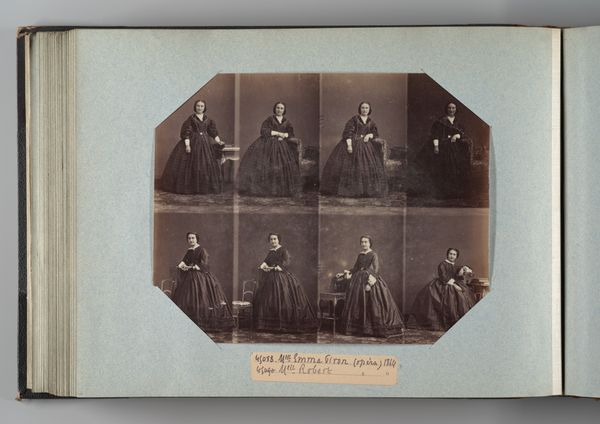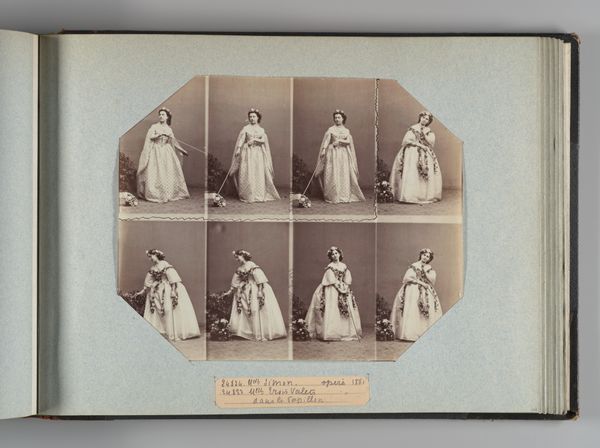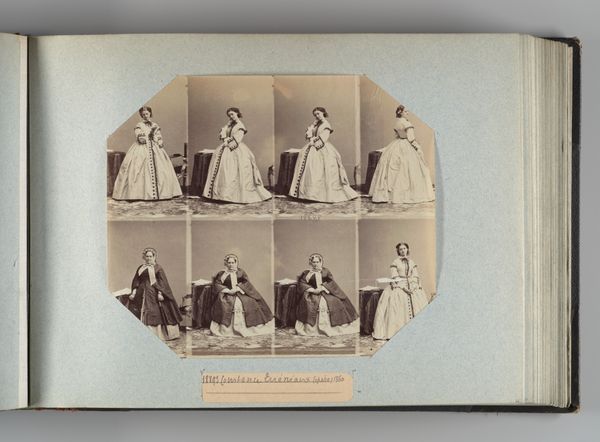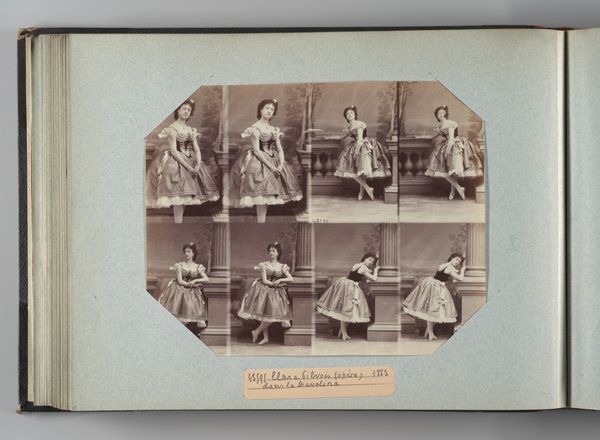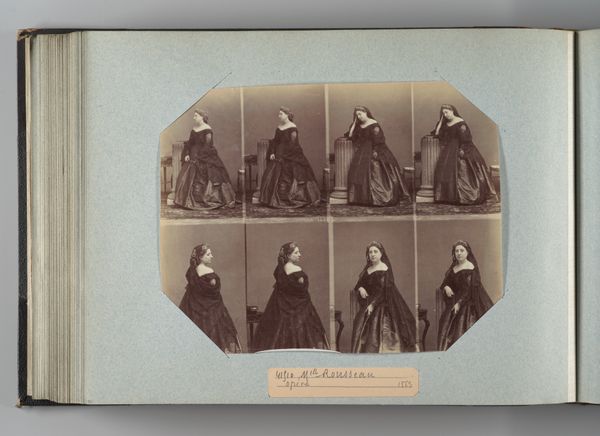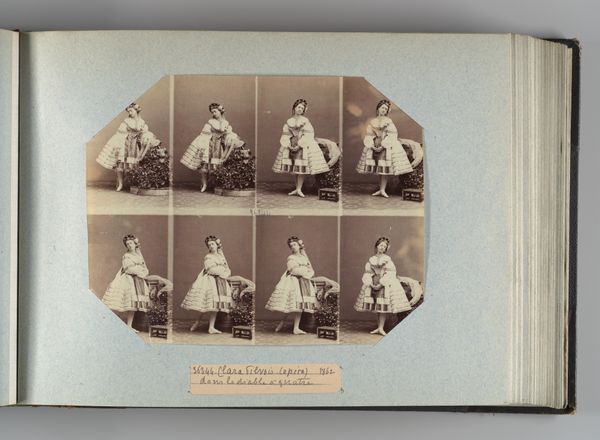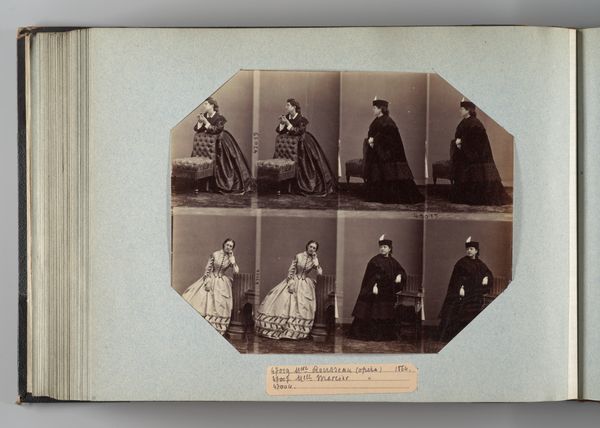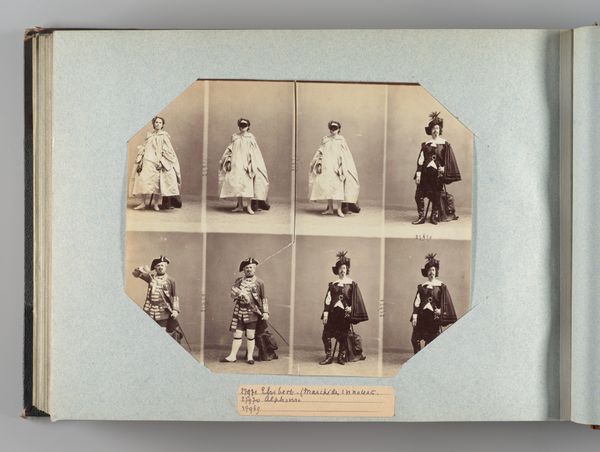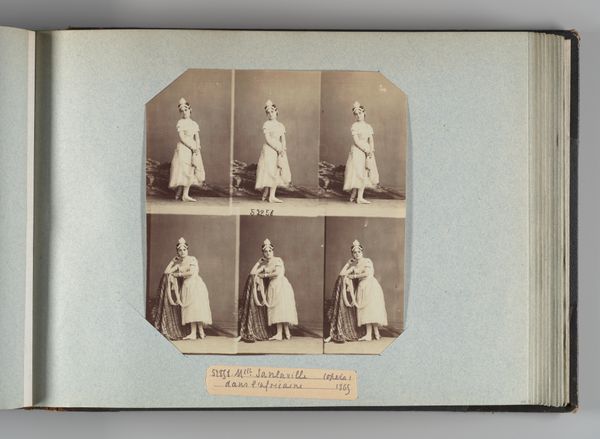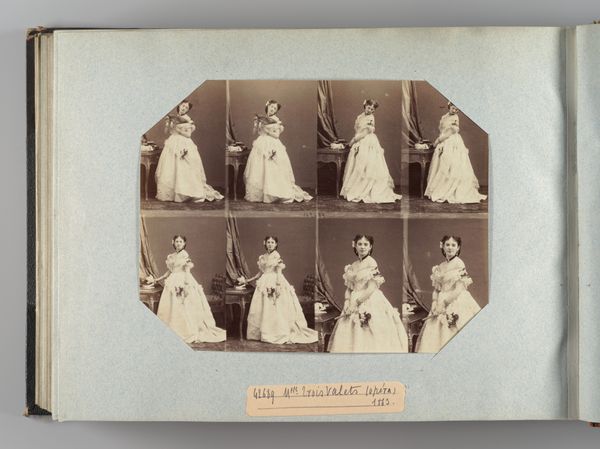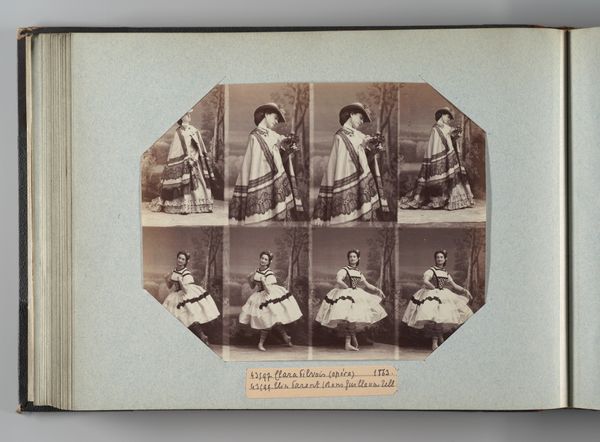
daguerreotype, photography, albumen-print
#
portrait
#
daguerreotype
#
photography
#
albumen-print
Dimensions: Image: 7 3/8 × 9 1/4 in. (18.8 × 23.5 cm) Album page: 10 3/8 × 13 3/4 in. (26.3 × 35 cm)
Copyright: Public Domain
Editor: This is "Mlle Simon; Me Simon, mère," taken in 1862 by André-Adolphe-Eugène Disdéri. It appears to be an albumen print, or perhaps even a collection of daguerreotypes. The subject is captured in eight different poses. I find the multiple images somewhat repetitive, and it makes me wonder – what's the purpose of presenting a portrait this way? Curator: That's a keen observation. Disdéri was a master of carte-de-visite photography. This format revolutionized portraiture by making it accessible and affordable for the burgeoning middle class. These small, easily reproducible prints fostered a culture of celebrity and visual self-representation previously exclusive to the elite. How do you think this specific arrangement, the eight different poses, contributed to that phenomenon? Editor: I guess it makes the portrait more dynamic? Almost like a moving image before film, allowing for a more complete representation of the subject's personality and status? Curator: Precisely. Disdéri was tapping into the public’s desire to collect and display these images, not unlike trading cards today. Think about the social function of displaying these cartes-de-visite in albums in the parlor. It was a way of performing one's social connections and status. And what about the seemingly 'repetitive' nature? Is there anything within those repetitions that strikes you? Editor: Perhaps it highlights subtle variations in expression, the nuances of a person's character within a socially prescribed pose. Each image acts as a slightly different 'take,' contributing to an overall impression of the subject. Curator: Exactly. It's about managing perception. Photography was a relatively new technology, and Disdéri capitalized on its potential to both democratize and shape identity. Editor: That's fascinating. So much more than just taking a picture! I'll definitely look at portraiture with new eyes from now on, considering the social and political context in which they were produced and consumed. Curator: Agreed. Considering photography's influence in the 19th Century highlights how visual media impacts identity construction and social dynamics, something incredibly relevant even today.
Comments
No comments
Be the first to comment and join the conversation on the ultimate creative platform.

